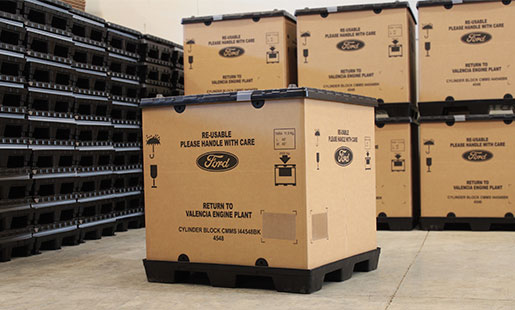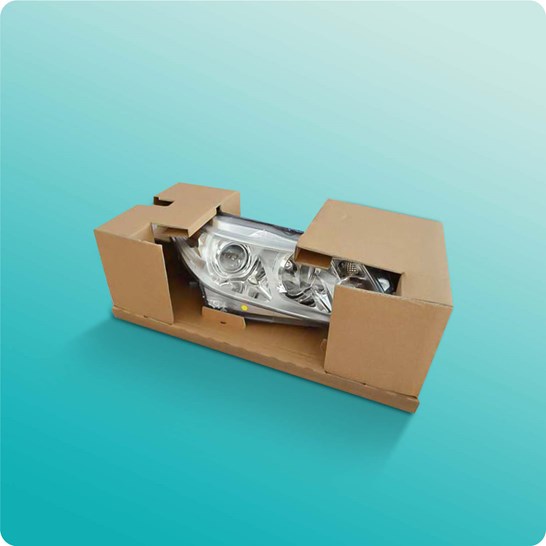High quality in Every Mold And Mildew: Plastic Container Manufacturer Expertise
Wiki Article
Reliable Industrial Recycling Solutions for Lasting Product Packaging: A Comprehensive Guide
In today's significantly environmentally-conscious globe, the need for lasting product packaging remedies has never been higher. To meet this demand, businesses throughout industries are actively looking for efficient industrial recycling services. Browsing the facility landscape of lasting product packaging can be testing without an extensive guide. That's where this detailed overview on efficient commercial recycling options for lasting packaging is available in. By exploring crucial locations such as product packaging product choice, developing for recyclability, executing reusing facilities, working together with recycling companions, and monitoring and gauging recycling success, this overview will outfit you with the expertise and tools essential to make educated decisions and drive favorable modification within your organization. Whether you're a packaging professional, sustainability supervisor, or just thinking about the topic, this guide will give useful insights and approaches to assist you browse the world of lasting product packaging.Product Packaging Material Selection
The selection of packaging materials plays an essential role in guaranteeing the sustainability of industrial recycling solutions. When it involves lasting product packaging, the choice of products is type in minimizing ecological influence and optimizing reusing effectiveness. Choosing the best materials can help in reducing waste generation, save sources, and advertise a circular economic climate.One important element to think about in packaging product option is recyclability - industrial packaging solutions. Products that can be quickly recycled and incorporated back into the manufacturing cycle are liked. As an example, products like cardboard, paper, glass, and particular kinds of plastics can be reused multiple times without shedding their high quality. On the other hand, products that are difficult to recycle, such as mixed plastics or non-recyclable compounds, can create challenges for the reusing process and may end up in land fills or burners.
An additional consideration is using biodegradable and sustainable products. Packaging made from renewable resources, such as plant-based plastics or biopolymers, can help decrease dependence on nonrenewable fuel sources and minimize climate change. Furthermore, eco-friendly materials break down naturally with time, decreasing the buildup of waste in landfills.
Moreover, the weight and volume of product packaging products should be lessened to reduce transportation expenses and power consumption. Light-weight materials not only need fewer resources throughout manufacturing yet also contribute to reduce carbon discharges throughout transportation.
Creating for Recyclability
In order to ensure the recyclability of packaging materials, thoughtful design is crucial. Creating for recyclability involves creating product packaging that can be conveniently arranged, divided, and refined in reusing centers. One crucial element of making for recyclability is the option of materials. Product packaging designers ought to prioritize the use of materials that are widely accepted for reusing and have actually developed reusing facilities. Materials such as glass, aluminum, and certain kinds of plastic, like PET and HDPE, are frequently recycled and should be preferred over products that are pricey or hard to reuse.An additional critical consideration in designing for recyclability is the removal of unnecessary parts or materials. By minimizing the variety of layers, finishings, and additional elements, packaging can be made less complex and less complicated to recycle. In addition, designers need to intend to reduce using mixed products, as they can complicate the reusing process.

Implementing Recycling Infrastructure
Reliable implementation of reusing infrastructure is critical for the success of industrial recycling remedies. Without proper facilities in position, the recycling process becomes ineffective and inadequate, preventing the overall goal of lasting packaging.To execute reusing framework efficiently, numerous crucial elements require to be considered. To start with, there need to be an efficient collection system that promotes the separation and collection of recyclable products. This can consist of marked reusing containers in public spaces, as well as partnerships with waste administration firms for curbside pick-up and sorting.
When collected, the recyclable materials need to be moved to recycling facilities in a timely manner. This calls for effective logistics and transport networks, making sure that the materials get to the ideal facilities without delay.
At the reusing centers, progressed sorting and processing innovations must remain in location to separate different sorts of materials effectively. This consists of using automated sorting equipments, optical scanners, and manual sorting strategies.
Moreover, there must be a durable market demand for recycled materials. This can be achieved via collaborations with manufacturers and sectors that make use of recycled products in their production processes. Developing a secure market for recycled products incentivizes the recycling market and promotes the round economic situation.
Teaming Up With Recycling Allies

One secret facet of working together with recycling companions is the establishment of clear interaction networks. It is essential to establish open lines of interaction to facilitate the exchange of information, updates, and responses. This permits both events to remain informed about the progression of reusing efforts and deal with any obstacles or problems that may emerge.
Additionally, cooperation can entail joint efforts in applying and designing reusing programs. Reusing companions can provide important insights and advice in creating efficient collection systems and identifying one of the most ideal recycling technologies. By collaborating, companies and reusing companions can optimize the recycling procedure and decrease waste.
Furthermore, partnership can prolong beyond the functional elements of reusing. It can additionally include campaigning for and education campaigns. By signing up with pressures, businesses and reusing partners can elevate recognition about the importance of reusing and advertise the fostering of sustainable product packaging techniques amongst consumers and various other stakeholders.
Tracking and Measuring Recycling Success
To make certain the efficiency of industrial recycling solutions and the success of lasting packaging goals, it is crucial for services and their recycling partners to establish a comprehensive system for monitoring and measuring reusing success (bulk container recycling). Gauging and tracking recycling success allows services to assess the influence of their reusing efforts, recognize areas for improvement, and set purposeful targets for future progressOne means to track recycling success is through the usage of information collection and evaluation devices. By collecting data on the amount of packaging waste generated, the percentage of waste that is recycled, and the kinds of products being recycled, organizations can gain useful understandings right into their reusing performance. This information can then be analyzed to identify patterns, patterns, and areas of inefficiency.
One more essential element of tracking and determining reusing success is establishing standard and clear metrics. This permits companies to contrast their efficiency against sector criteria and track their development gradually. Metrics such as reusing rates, waste diversion rates, and greenhouse gas discharges can give a measurable action of a company's recycling success.

Verdict
To conclude, executing effective industrial recycling remedies for sustainable product packaging requires mindful factor to consider of packaging material selection, creating for recyclability, applying reusing framework, teaming up with reusing companions, and tracking and gauging reusing success. By incorporating these methods, companies can add to a more environmentally-friendly and lasting strategy to product packaging, minimizing waste and advertising the round economic climate.By discovering key areas such as product packaging material selection, designing for recyclability, executing reusing infrastructure, working together with recycling partners, and tracking and measuring recycling success, this guide will outfit you with the expertise and devices needed to make educated choices and drive positive modification within your organization. Product packaging designers need to prioritize the use of materials that are commonly accepted for reusing and have developed reusing frameworks.Collaboration with reusing partners is important for the successful implementation of commercial recycling options and the achievement of sustainable packaging objectives. By signing up with pressures, services and reusing companions can elevate understanding concerning the importance of recycling and advertise the adoption of lasting packaging bulk container recycling methods among customers and other stakeholders.
By accumulating data on the quantity of product packaging waste generated, the percent of waste that is recycled, and the types of products being reused, services can obtain valuable insights right into their recycling performance.
Report this wiki page